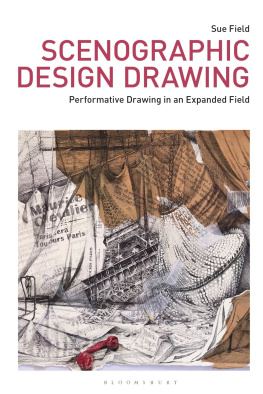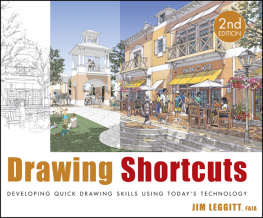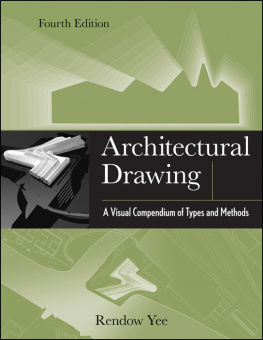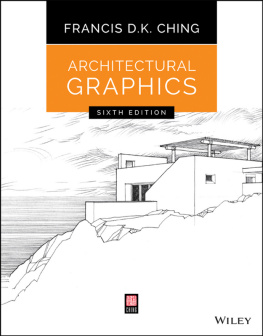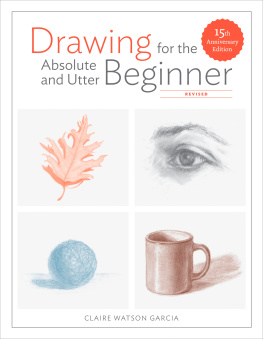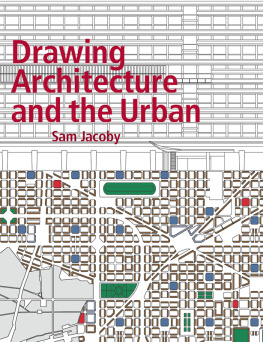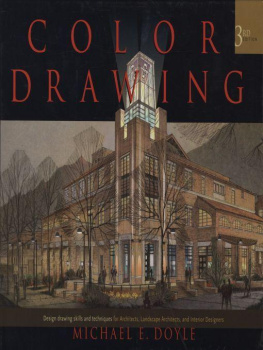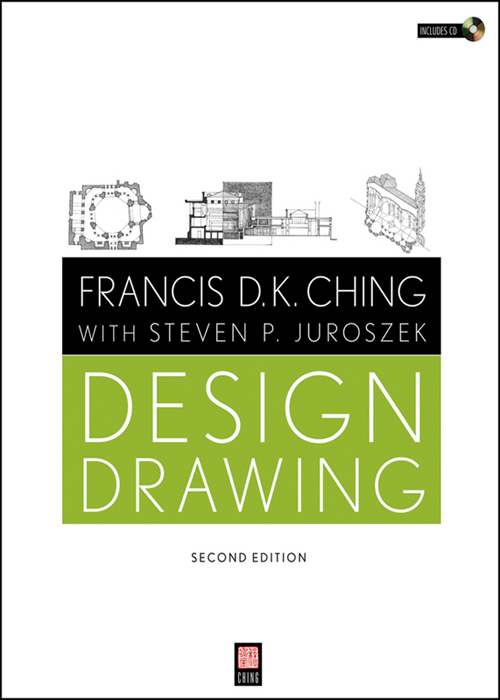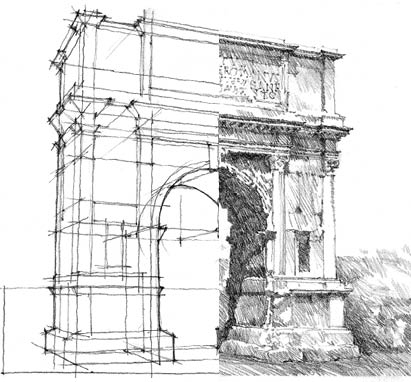DESIGN DRAWING
Second Edition
Copyright 2010 by John Wiley & Sons, Inc. All rights reserved
Published by John Wiley & Sons, Inc., Hoboken, New Jersey
Published simultaneously in Canada
No part of this publication may be reproduced, stored in a retrieval system, or transmitted in any form or by any means, electronic, mechanical, photocopying, recording, scanning or otherwise, except as permitted under Section 107 or 108 of the 1976 United States Copyright Act, without either the prior written permission of the Publisher, or authorization through payment of the appropriate per-copy fee to the Copyright Clearance Center, 222 Rosewood Drive, Danvers, MA 01923, (978) 750-8400, fax (978) 750-4470, or on the web at .
Limit of Liability/Disclaimer of Warranty: While the publisher and author have used their best efforts in preparing this book, they make no representations or warranties with respect to the accuracy or completeness of the contents of this book and specifically disclaim any implied warranties of merchantability or fitness for a particular purpose. No warranty may be created or extended by sales representatives or written sales materials. The advice and strategies contained herein may not be suitable for your situation. You should consult with a professional where appropriate. Neither the publisher nor author shall be liable for any loss of profit or any other commercial damages, including but not limited to special, incidental, consequential, or other damages.
For general information on our other products and services or for technical support, please contact our Customer Care Department within the United States at 800-762-2974, outside the United States at (317) 572-3993 or fax (317) 572-4002.
Wiley publishes in a variety of print and electronic formats and by print-on-demand. Some material included with standard print versions of this book may not be included in e-books or in print-on-demand. If this book refers to media such as a CD or DVD that is not included in the version you purchased, you may download this material at http://booksupport.wiley.com . For more information about Wiley products, visit www.wiley.com .
Library of Congress Cataloging-in-Publication Data
Ching, Frank, 1943
Design drawing / Francis D.K. Ching with Steven P. Juroszek. -- 2nd ed.
p. cm.
Includes index.
ISBN 978-0-470-53369-7 (pbk.); ISBN 978-0-470-95095-1 (ebk); ISBN 978-0-470-95112-5 (ebk); ISBN 978-1-118-00737-2 (ebk)
1. Architectural drawing--Technique. I. Juroszek, Steven P. II. Title.
NA2708.C49 2011
720.28'4--dc22
2010040973
ACKNOWLEDGMENTS
This manual began as a reader for a sequence of design drawing courses offered by the Department of Architecture at the University of Washington. Its subsequent development is largely the result of the many discussions, suggestions, and contributions of a skilled and dedicated group of teachersCatherine Barrett, Cynthia Esselman, Kevin Kane, Anita Lehmann, Alan Maskin, Ben Sharpe, Judith Swain, Carol Thomas, Mark Wolfe, and Gail Wong. Special thanks go to Nan-Ching Tai, who offered his invaluable expertise and assistance in preparing the examples of digital lighting and the drawing system animations on the companion CD.
This text is also a testimony to the efforts, accomplishments, and critical feedback of the many students who regularly and enthusiastically tested the pedagogical soundness of the material.
Finally, I would like to acknowledge those instructors who have gathered regularly at the conferences of the Design Communication Association to passionately and unselfishly share their thoughts about teaching and drawing. Their insights nurtured the progress and enhanced the dimensions of this work.
The first edition of this book was prepared in part through a grant from the Graham Foundation for Advanced Studies in the Fine Arts.
PREFACE
This is a comprehensive drawing manual for students of architecture, interior design, and related design disciplines. Drawing guides typically range from beginning texts on how to draw certain subjects, such as landscapes or the human figure, to more advanced treatises on drawing as art. Some focus on a specific medium, such as pencil or pen-and-ink; others dwell on a particular technique, such as perspective drawing. Further, the discussion is often limited to learning how to draw from observation. This book is based on the premise that drawing is central to the design process. It therefore focuses on drawing as a medium for visualizing and communicating design ideas.
The work begins with an introduction to the drawing process, which involves seeing, imagining and representing. The remaining content is divided into three parts. Part 1: Drawing from Observation introduces the graphic elements that constitute the vocabulary of drawingline, shape, tone, form and space. This largely remains the province of freehand drawing because we can best learn to see, understand and represent these elements through direct examination.
Part 2: Drawing Systems describes the formal systems for representing three-dimensional objects and space, which constitute the language of design drawing. Regardless of the drawing medium or technique we use, each system represents a uniquely different way of seeing and describing the visible world that we experience directly, or a future world that we imagine in design.
Part 3: Drawing from the Imagination addresses issues that arise as we think in a speculative manner to stimulate the design process, develop our design ideas through drawing, and plan how to present our design proposals in the best possible light. It is in this arena where digital drawing and modeling tools have made major advances, both in academia and the profession.
Accompanying each section are a series of short exercises for developing skills and suggestions for longer projects that test the understanding and application of concepts. Like any discipline, drawing takes perseverance and regular exercise to develop mastery and fluency. The information in this manual cannot be received passively but must be learned by actively participating in the process of drawing.
The emphasis remains on drawing by hand, which is the most direct and intuitive means we have to express our visual thoughts and perceptions. Through the tactile nature of drawing in direct response to our visual thoughts and perceptions, we develop an understanding of spatial concepts and the critical ability to think and visualize in three dimensions.
Nevertheless, we cannot ignore the advances in computer technology that have significantly altered the process of architectural drawing and design. Current graphics software ranges from 2D drawing programs to 3D surface and solid modelers that aid in the design and representation of buildings, from small houses to large and complex structures. It is therefore important to acknowledge the unique opportunities and challenges digital tools offer in the production of architectural graphics. This second edition therefore augments the material in the first edition with discussions and examples of digital graphic techniques where appropriate to the task at hand.




